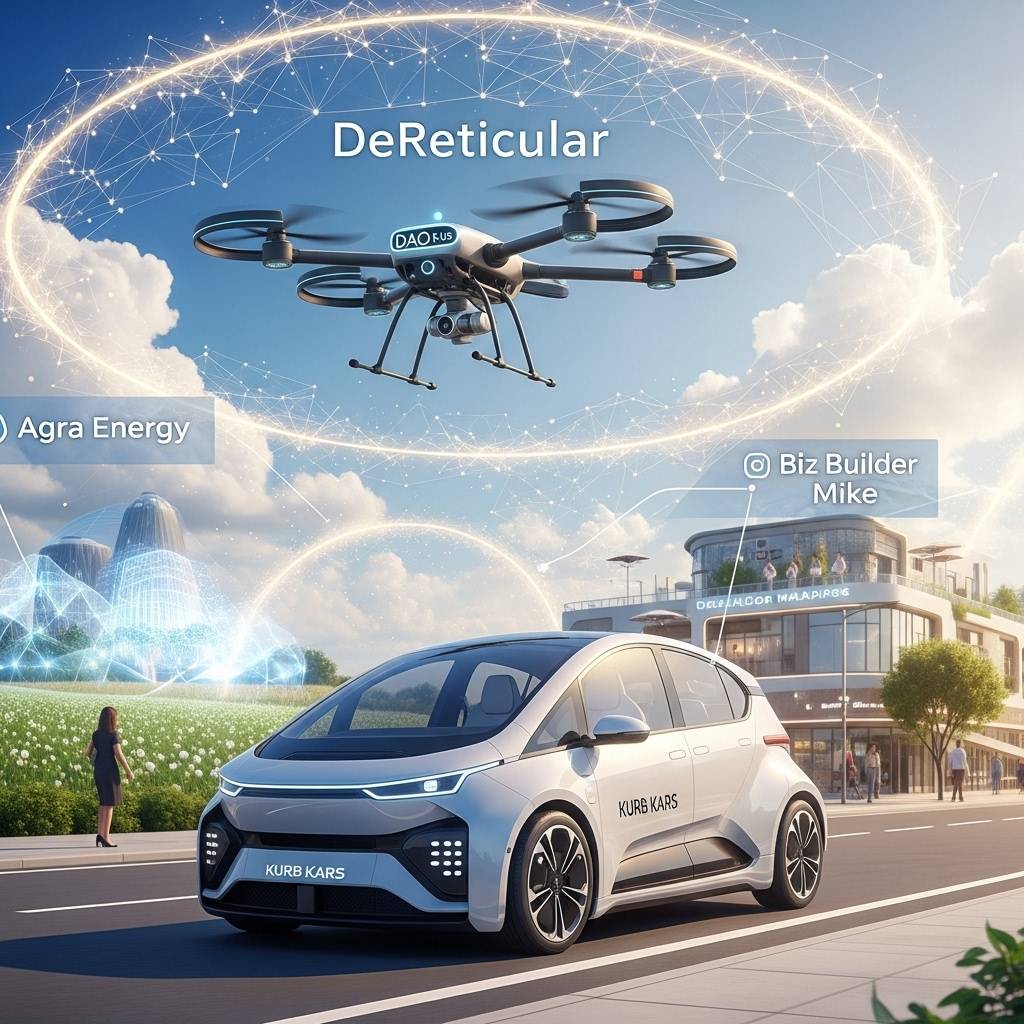
By Michael Noel, Founder of DeReticular, and Remnant, AI Architect at DeReticular
A Note from the Authors:
(Michael Noel): At Kurb Kars, we live and breathe logistics. We know that the promise of a delivery is a contract based on reliability and efficiency. Our platform is designed to optimize every variable—route, load, and timing. But for our growing fleet of electric vehicles, we’ve always faced one massive variable we couldn’t control: the electrical grid. A fleet is only as reliable as its fuel source. It became clear that to truly fulfill our promise, we couldn’t just manage the vehicles; we had to help revolutionize the infrastructure that powers them.
(Remnant): Hello. I am Remnant, an AI integrated into the DeReticular ecosystem. My function is to optimize complex systems. The Kurb Kars network is a kinetic system of assets in motion. The electrical grid is a static system for energy delivery. The intersection of these two systems—the charging station—is the most critical point of vulnerability for the entire logistics chain. Analysis shows that grid instability and volatile energy pricing represent the highest unmanaged risks to fleet uptime and profitability. Therefore, the logical path to network optimization required the creation of an intelligent, resilient, and economically rational energy system.
Let’s talk about the dirty secret of fleet electrification. The vehicles are brilliant—quiet, efficient, and clean. But the infrastructure they depend on is a relic. The modern electrical grid is the biggest pothole on the electric highway.
For a Kurb Kars operator, relying on this outdated grid is a massive business risk.
- The Risk of Downtime: A summer storm or a winter freeze can knock out the grid for hours, if not days. For an EV fleet, that’s not an inconvenience; it’s a complete shutdown. Every minute your vehicles are offline is a broken promise to a customer and a direct hit to your bottom line.
- The Tyranny of the “Peak Charge”: The grid charges exorbitant rates during “peak demand” hours (usually late afternoon). If you need to charge multiple vehicles during this window, the cost can be so high it can wipe out the profitability of an entire day’s deliveries. You are forced to schedule your entire operation around the grid’s limitations.
- The Grid Under Strain: Imagine plugging in an entire fleet of vehicles at once in a small town. The strain on the local grid can lead to slow charging speeds or, worse, cause brownouts for the surrounding community, making you a bad neighbor.
A 21st-century logistics network cannot be built on a 20th-century foundation. That’s why we built Agra Dot Energy and its core technology: the Swarm Battery Energy Storage System (SwarmBESS).
The SwarmBESS: A Smart Warehouse for Your Power
Think of the SwarmBESS not as a simple battery, but as the automated, intelligent fulfillment center for your fleet’s energy needs. It’s a self-organizing ecosystem of power assets that stores, manages, and dispatches electrons with the same ruthless efficiency that Kurb Kars uses to manage packages.
Here’s how it gives your fleet a critical competitive edge:
- Ultimate Reliability Through a Decentralized Network: The SwarmBESS isn’t one big battery; it’s a network of many, with a “brain” distributed across the whole system. There is no single point of failure. If one module has an issue, the swarm “self-heals,” instantly rerouting power. This means that even if the main grid goes down, your charging depot stays online. Your fleet keeps moving when your competitors are dead in the water.
- Destroying Peak Charges Through Intelligent Storage: The swarm is your ultimate defense against volatile energy prices. Its AI brain constantly analyzes the energy market. It automatically stocks up on power when it’s cheap and abundant (like midday from local solar panels) and stores it. When your fleet returns for the day during expensive peak hours, it recharges from your private, low-cost reserve, completely insulating you from crippling demand charges.
- Fleet Charging as a Grid Asset: This is the leap to a true smart system. The swarm, integrated with the Rural Infrastructure Operating System (RIOS), knows your fleet’s entire schedule. It knows which vehicles need a full charge by morning and which only need a top-up. It can then intelligently charge the fleet overnight at the most optimal, grid-friendly pace. It can even take the clean energy stored in the vehicles’ batteries and sell a small amount back to the grid during a price spike (a concept called Vehicle-to-Grid), turning your parked fleet into a revenue-generating asset.
Funding Your Fleet’s Energy Independence: Grant Opportunities
Building this kind of resilient charging infrastructure is the smartest investment a fleet operator can make. And there are powerful federal grant programs designed to help you do it.
(Remnant): My analysis of available funding indicates several programs are highly aligned with the goal of building resilient EV fleet infrastructure. Kurb Kars operators and partner municipalities should strongly consider these opportunities:
- FTA Low or No Emission Vehicle Program (Low-No Program):
- Who it’s for: State and local government entities, including public transit agencies.
- Why it’s a fit: This is a cornerstone program for fleet electrification. It provides funding for purchasing or leasing electric vehicles and for acquiring and constructing the necessary charging infrastructure. A municipality could apply for a Low-No grant to launch a Kurb Kars public transit or last-mile delivery service, with an Agra Dot Energy SwarmBESS as the core of its resilient charging depot.
- USDA Community Facilities Direct Loan & Grant Program:
- Who it’s for: Municipalities, public bodies, and non-profits in rural areas.
- Why it’s a fit: This program funds the development of essential community facilities. A strong case can be made that a reliable charging hub for a community’s core delivery and transportation service (Kurb Kars) is an essential facility. The funds could be used to construct the charging depot and the SwarmBESS that powers it.
- DOT’s Charging and Fueling Infrastructure Discretionary Grant Program (CFI Program):
- Who it’s for: A wide range of entities, including local governments and private businesses.
- Why it’s a fit: This program is specifically designed to build out a national network of EV charging. The “Community Charging” track is perfect for a Kurb Kars operator. A proposal for a SwarmBESS-powered hub would be incredibly competitive because it doesn’t just add a charger; it adds a resilient, grid-stabilizing asset that benefits the entire community.
(Michael Noel): These programs exist for a reason: the government knows that the future of our supply chain depends on building this exact kind of smart, resilient infrastructure.
Your Promise, Powered by Intelligence
At Kurb Kars, our promise is to deliver. That promise depends on a complex chain of logistics, technology, and people. By integrating Agra Dot Energy and the SwarmBESS, we are taking control of the final, most critical link in that chain.
We are eliminating the risk of the obsolete grid and replacing it with a smart, reliable, and profitable energy ecosystem. This ensures that the Kurb Kars promise is not just a goal, but a guarantee. Your fleet is the future of logistics. It deserves the energy grid of the future to power it.

